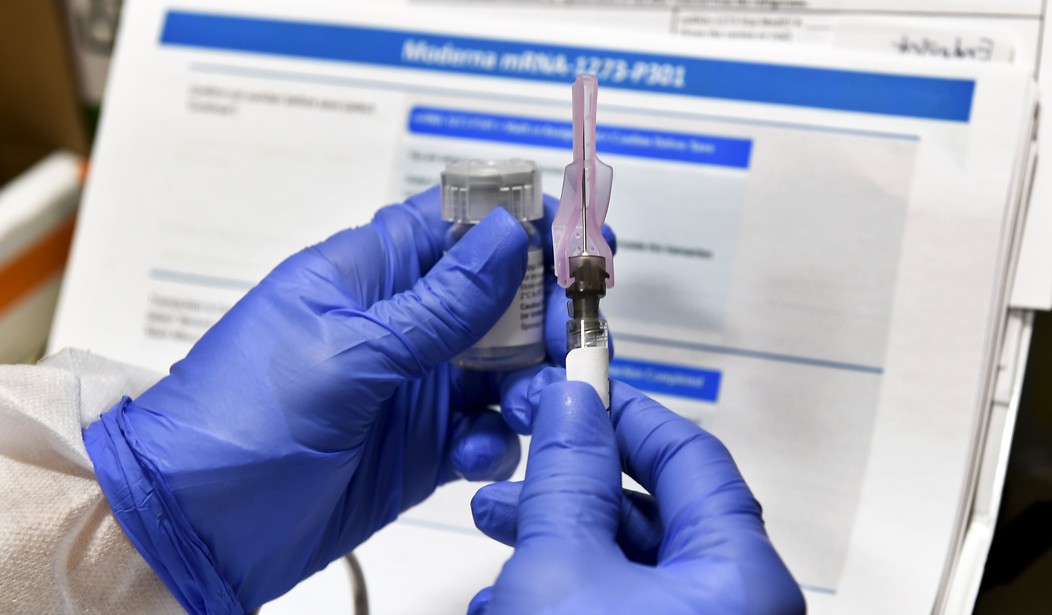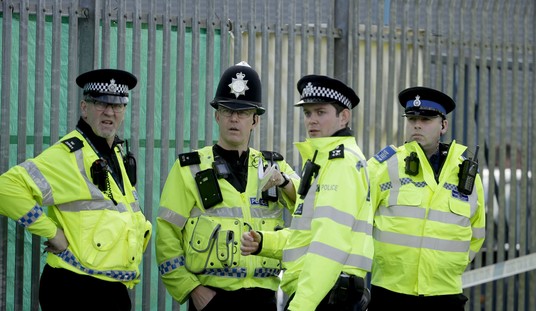There’s been plenty of idle chatter about the Indian or “Delta” variant, including here, over the past 10 days as cases began to tick up in the UK again. American epidemiologists had been in wait-and-see mode, though, partly because that strain wasn’t spreading aggressively in the U.S. and partly because it wasn’t clear yet from the British data just how formidable the variant, B.1.617, was.
But something changed yesterday. In the past 24 hours a notable number of experts have begun sounding the alarm that B.1.617 will soon be a real danger to Americans — at least, those who haven’t been vaccinated yet.
What broke the dam, I assume, was Fauci warning the public about the variant at yesterday’s White House briefing. The good news is that if you’ve had two doses of the vaccine you should be solidly, if not perfectly, protected. The bad news is that you’ve had only one dose or none at all, the Indian variant is the most formidable threat you’ll have faced since March 2020.
Top infectious disease expert Dr. Anthony Fauci cautioned against letting the Delta variant of COVID-19, first identified in India, take over in the U.S., urging people again to get vaccinated pic.twitter.com/sKzxUHQfiR
— Reuters (@Reuters) June 9, 2021
Infectious disease experts echoed the point later:
I do not say this lightly, but the delta variant is a seriously horrible development in terms of global health. More transmissible, more dangerous, but blunted and controlled by vaccines. We need to get those vaccines to where they are needed
— Bill Hanage (@BillHanage) June 9, 2021
We need to approach the Delta variant (B.1.617.2) seriously, especially as we see evidence of convergence with mutations associated with immune evasion in Beta (B.1.351).
This means full vaccination, as soon as possible, for as many as possible. Everywhere. https://t.co/zw9naf0A1p
— Dr. Angela Rasmussen (@angie_rasmussen) June 9, 2021
Good overview on spread of delta variant; noteworthy that a large proportion of cases are associated with recent travel (from multiple countries) – suggesting that the importation may be the result of high but undetected prevalence in countries with limited genomic surveillance. https://t.co/Ck4nAi7Dxl
— Scott Gottlieb, MD (@ScottGottliebMD) June 9, 2021
Gottlieb’s point is that the variant may have spread further internationally already than anyone realizes, which means more vectors of transmission arriving in the U.S. every day. The good news from the UK is that, while it’s clear that B.1.617 is the most contagious variant yet (at least 40 percent more infectious than the B.1.1.7 strain), it’s not causing an explosion in hospitalizations. “The levels are significantly lower than we have seen in previous waves,” said one NHS official of the slowly rising number of patients in need of ER care, emphasizing that British hospitals are at no risk (right now) of being overwhelmed. Fauci made the point yesterday too that peak transmission of the virus in the UK is among those aged 12-20, a group that hasn’t been vaccinated at the same clip as older adults have. That suggests that vaccines really are reducing transmission, not just hospitalization.
The bad news is that if you’re unvaccinated, you’re vulnerable. And meanwhile, the variant is growing here at home:
The delta (B.1.617.2) variant is clearly outcompeting alpha (B.1.1.7) in the US, d/t both enhanced transmissibility and immune evasion, on its way to becoming dominant
Our 2-dose vaccines provide powerful protection
But 42% no vaccination; 52% 1-dosehttps://t.co/vBFxb0SgaQ pic.twitter.com/JqMOs8kikX— Eric Topol (@EricTopol) June 9, 2021
Update https://t.co/t6RYIZYbFE shows how delta (in green, B.1.617.2) has become the dominant strain in the UK, whereas it's just getting started in the US
And many other countries showing the rise of delta, throughout Europe, Asia and Australia/NZ @firefoxx66 🙏 pic.twitter.com/4rPYeZCIAg— Eric Topol (@EricTopol) June 8, 2021
It’s hard to know just how many new cases in the U.S. are the handiwork of B.1.617. Fauci estimated it at six percent but this model placed the true number at something more like 19 percent as of six days ago:

The trendline speaks for itself.
None of this would be a serious problem if, somehow, unvaccinated people were evenly dispersed throughout the population. If we could surround every unvaxxed person with a group that’s been vaccinated, it’d be difficult for B.1.617 to reach the former since the latter don’t transmit the virus (much). Two wrinkles, though. The share of Americans who are fully vaccinated (42.3 percent) is still considerably smaller than the share who aren’t. Partly that’s due to younger kids still being ineligible to get their shots, but just half of people aged 12 or older have been fully immunized at this point. There’s no way to protect the unvaxxed by “surrounding” them with the vaxxed when there are as many people who haven’t been immunized as have been.
The second problem, a big one, is that the unvaccinated aren’t spread out. They’re clustered, just like trees in a forest fire.

Two-thirds of people who refuse to get vaccinated have only a few family members who are protected or none at all. On top of that, we’ve seen regional differences in vaccination rates widen over the past two months as states worked their way through people who were eager to get vaccinated and started having to convince holdouts. Blue states and counties are getting immunized at high rates, red states and counties are getting immunized at lower ones. It’s easy to see from that and the poll data above how outbreaks of B.1.617 might happen in redder areas. With fewer vaccinated strangers around, it’s easy for the virus to jump from one household to another in public spaces. And with fewer family members vaccinated, it’s easy for infected people to bring the virus home from that public space and start infecting their spouse, kids, or parents.
All of which is to say: If you’re not adamantly opposed to vaccination but have been holding off because it just hasn’t been a priority, it should be a priority now. Especially since it’ll take five weeks before you’re fully protected after your first dose of an mRNA vaccine. And that’s what it takes to ward off B.1.617, as Fauci said yesterday — two doses. One dose of even the mighty Pfizer or Moderna products doesn’t do much to keep the Indian variant at bay.








Join the conversation as a VIP Member